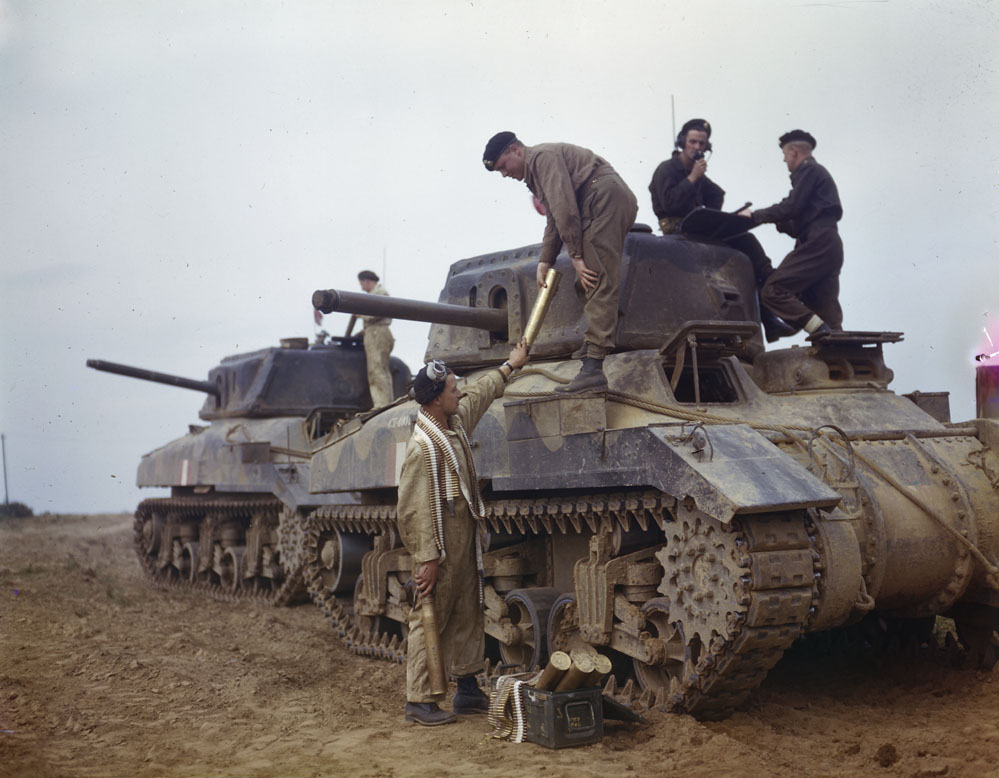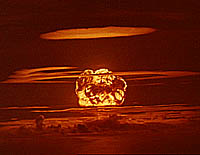|
Canadian Special Operations Forces Command
Canadian Special Operations Forces Command (CANSOFCOM; ) is a command of the Canadian Armed Forces. It is responsible for all special forces operations that respond to terrorism and threats to Canadians and Canadian interests around the world. CANSOFCOM's primary mission is counter-terrorism, which involves conducting rigorous and specialized training and working with local law enforcement agencies, as required, to protect Canadians from the threat of terrorism. Commander CANSOFCOM reports directly to the Chief of the Defence Staff. The leadership of the CAF and the Department of National Defence maintain full oversight on all CANSOFCOM operations. Composition CANSOFCOM is organized into a headquarters element and five units: * Joint Task Force 2 (JTF 2); * Canadian Special Operations Regiment (CSOR); * 427 Special Operations Aviation Squadron (SOAS); * Canadian Joint Incident Response Unit (CJIRU); * Canadian Special Operations Training Centre (CSOTC). Operational task ... [...More Info...] [...Related Items...] OR: [Wikipedia] [Google] [Baidu] |
427 Special Operations Aviation Squadron
427 Special Operations Aviation Squadron (427 SOAS) () is a tactical helicopter unit that provides aviation support to Canadian Special Operations Forces Command. The squadron is based at Garrison Petawawa (CFB Petawawa), Ontario with a fleet of Bell CH-146 Griffon helicopters. It was founded during the Second World War as No. 427 Squadron RCAF. History 427 Squadron started as a Royal Canadian Air Force (RCAF) bomber squadron formed at Croft, England on 7 November 1942 and spent its wartime entirely in England as a part of No. 6 Group RCAF, part of the Royal Air Force (RAF) Bomber Command. 427 flew Vickers Wellingtons, the Mk IIIs and Mk Xs, from its first operational mission on 14 December 1942, a minelaying sortie to the Frisian Islands, until May 1943 when it was relocated to Leeming, North Yorkshire. Re-equipped with Handley Page Halifax Mk V aircraft, the squadron flew intensely until early 1944 when it replaced its inventory with Halifax Mk III aircraft. This ... [...More Info...] [...Related Items...] OR: [Wikipedia] [Google] [Baidu] |
Royal Canadian Armoured Corps
The Royal Canadian Armoured Corps (RCAC; ) is the armoured corps within the Canadian Army, including 3 Regular and 18 Reserve Force regiments,The Regiments and Corps of the Canadian Army (Queen's Printer, 1964) as well as the Royal Canadian Armoured Corps School. The corps was formed as the Canadian Armoured Corps in 1940, within the Canadian Army (Active). In August 1945, it was given its "royal" designation, and following the Second World War, several Reserve Force units were incorporated into the corps. From 1968 until 2013, it was officially named the Armoured Branch. History Pre-1940 Originally formed as the Canadian Cavalry Corps in 1910, Canada's first tank units were not raised until late in 1918. Initially these units were considered to be part of the Machine Gun Corps and the 1st Canadian Tank Battalion, 2nd Canadian Tank Battalion and the 3e Bataillon de chars d'assaut were all too late to join the fighting in the First World War. However, the 1st Canadian Tank ... [...More Info...] [...Related Items...] OR: [Wikipedia] [Google] [Baidu] |
Personnel Branch
Employment is a relationship between two parties regulating the provision of paid labour services. Usually based on a contract, one party, the employer, which might be a corporation, a not-for-profit organization, a co-operative, or any other entity, pays the other, the employee, in return for carrying out assigned work. Employees work in return for wages, which can be paid on the basis of an hourly rate, by piecework or an annual salary, depending on the type of work an employee does, the prevailing conditions of the sector and the bargaining power between the parties. Employees in some sectors may receive gratuities, bonus payments or stock options. In some types of employment, employees may receive benefits in addition to payment. Benefits may include health insurance, housing, and disability insurance. Employment is typically governed by employment laws, organization or legal contracts. Employees and employers An employee contributes labour and expertise to ... [...More Info...] [...Related Items...] OR: [Wikipedia] [Google] [Baidu] |
Tan Beret
The tan beret, also known as a beige beret, has been adopted as official headgear by several special operations forces as a symbol of their unique capabilities. Afghan National Army Afghan National Army Special Forces members were awarded a tan beret after successfully completing ANA Special Forces Qualification and serving honorably for two deployment cycles. All ANA Special Forces candidates were selected from the Afghan National Army Commandos, where they earned a maroon beret for completing the ANA Commando Qualification Course at Camp Morehead, Kabul Province. Australian Army Qualified members of the Australian Special Air Service Regiment wear a sand-coloured beret with a metal gold and silver winged dagger badge on a black shield. Brazilian Army A sand-coloured beret is worn by Airmobile personnel, mostly concentrated in the 12th Light Infantry Brigade (Airmobile) in the State of São Paulo, regardless of Arm of Service. Berets are worn in the French manner, with Army Bad ... [...More Info...] [...Related Items...] OR: [Wikipedia] [Google] [Baidu] |
Combat Uniform
A combat uniform, also called a field uniform, battledress, or fatigues, is a casual wear, casual uniform used by military, police, firefighter, fire, and other public uniformed services for everyday fieldwork and duty, as opposed to dress uniforms for formal functions and parades. It generally consists of a jacket, trousers, and shirt or T-shirt, all cut to be looser and more comfortable than more formal uniforms. Combat uniform designs vary by regiment or service branch (e.g. army, navy, air force, marines, etc.). Uniform fabrics often come in Military camouflage, camouflage, disruptive patterns, or otherwise olive drab, brown, or khaki monochrome, to approximate the background and make the soldier less conspicuous in the field. In Western dress codes, field uniforms are considered equivalent to civilian casual wear, less formal than service dress uniforms, which are generally for office or staff use, as well as mess dress uniforms and full dress uniforms. Combat uniforms hav ... [...More Info...] [...Related Items...] OR: [Wikipedia] [Google] [Baidu] |
Michael Rouleau
Michael Norman Rouleau (born July 4, 1967) is a retired Canadian Armed Forces, Canadian Forces officer who served as a Lieutenant-general (Canada), lieutenant-general in the Canadian Special Operations Forces Command. He was the Vice Chief of the Defence Staff (Canada), vice chief of the Defence Staff from July 15, 2020, until June 14, 2021. Education Rouleau obtained a Bachelor of Arts degree in Political Science from the University of Manitoba. He would later graduate from the Royal Military College of Canada with a Masters in Defence Studies and a Master of Arts Degree in Security, Management, and Defence Policy. Military career Rouleau joined the Canadian Armed Forces (CAF) in 1985 as an artillery officer. In 1994 he became a Special Operation Assaulter with Joint Task Force 2, Joint Task Force 2 (JTF2) In 1999, he retired from the CAF and joined the ranks of the Ottawa Police Service, Ottawa Carleton Regional Police Service as an emergency response officer. However, he r ... [...More Info...] [...Related Items...] OR: [Wikipedia] [Google] [Baidu] |
David Barr (Canadian Forces Officer)
Colonel David Barr, CD, is a former commander of the Canadian Special Operations Forces Command. Biography Barr's early military service included platoon command with the 3rd Battalion Princess Patricia's Canadian Light Infantry in Victoria, British Columbia (1980–84), and subsequently with the Canadian Airborne Regiment in Petawawa, Ontario (1984–87). From 2007 to 2010, he was the chief of staff and deputy commander of Joint Task Force Games (JTFG), which provided support to secure Vancouver during the Vancouver 2010 Olympic and Paralympic Winter Games. Barr was the first commander of CSOFC. During his tenure as commander, Barr also deployed to Afghanistan as commander of the Canadian special operations task force in Operation Enduring Freedom Operation Enduring Freedom (OEF) was the official name used by the U.S. government for both the first stage (2001–2014) of the War in Afghanistan (2001–2021) and the larger-scale Global War on Terrorism. On 7 October ... [...More Info...] [...Related Items...] OR: [Wikipedia] [Google] [Baidu] |
Colonel (Canada)
Colonel (Col; ) is a Canadian Forces rank used by commissioned officers who wear the army, air force or special operations uniform. Captain(N) is the equivalent rank for officers who wear the navy uniform. A colonel is senior to the army and air force rank of lieutenant-colonel or the naval rank of commander, and junior to the army and air force rank of brigadier-general or the naval rank of commodore. Insignia Before unification of the Canadian Forces in 1968, rank structure and insignia followed the British pattern. File:Cdn-Army-Col(OF-5)-2014.svg, Dress uniform tunic Image:6 COL DEU(SHIRT).png, Uniform shirts File:CA-Army-OF5.gif, Olive green uniform (old insignia) Image:CADPAT temperate Col.png, CADPAT uniform (old insignia) Image:CADPAT arid Col.png, Arid-region CADPAT uniform (old insignia) File:CDN-Air Force-Colonel (OF5)-2015.svg, Dress uniform tunic Image:Air Force slip-on Col.png, Uniform shirts (old insignia) Image:Air Force olive Col.png, CADPAT uniform ... [...More Info...] [...Related Items...] OR: [Wikipedia] [Google] [Baidu] |
Weapons Of Mass Destruction
A weapon of mass destruction (WMD) is a Biological agent, biological, chemical weapon, chemical, Radiological weapon, radiological, nuclear weapon, nuclear, or any other weapon that can kill or significantly harm many people or cause great damage to Artificiality, artificial structures (e.g., buildings), Nature, natural structures (e.g., Mountain, mountains), or the biosphere. The scope and usage of the term has evolved and been disputed, often signifying more politically than technically. Originally coined in reference to strategic bombing, aerial bombing with Explosive material#Chemical, chemical explosives during World War II, it has later come to refer to large-scale weaponry of warfare-related technologies, such as Biological warfare, biological, chemical warfare, chemical, Radiological warfare, radiological, or nuclear warfare. Early usage The first use of the term "weapon of mass destruction" on record is by Cosmo Gordon Lang, Archbishop of Canterbury, in 1937 in refere ... [...More Info...] [...Related Items...] OR: [Wikipedia] [Google] [Baidu] |



